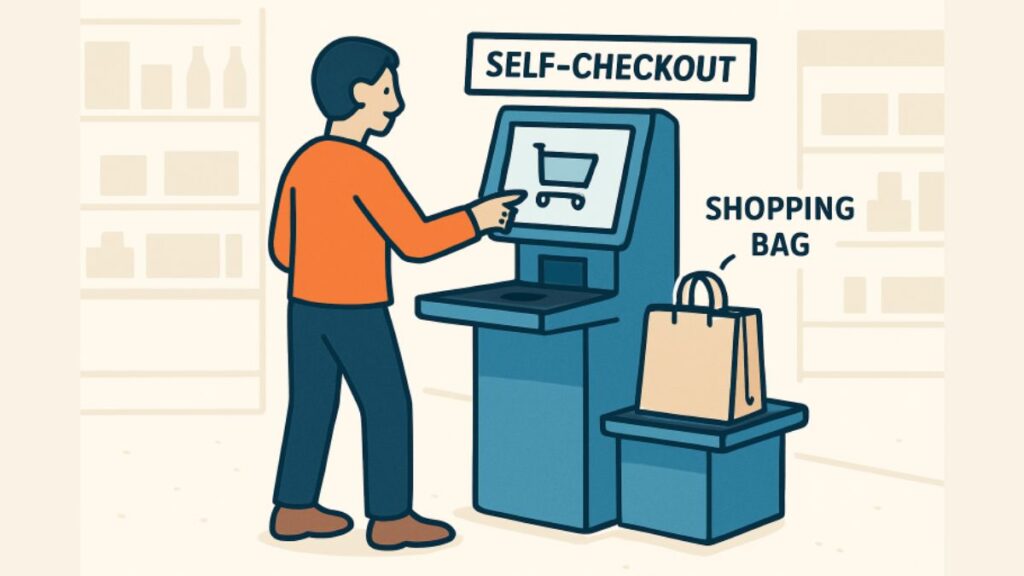Introduction
Self-checkout systems are profoundly transforming how retail businesses operate, enabling shoppers to manage their purchases independently while reducing wait times and labor costs for retailers. Over the past decade, self-checkout has evolved from a high-tech novelty to a core part of many stores, reflecting an industry-wide race to keep pace with rapidly shifting consumer expectations for speed, privacy, and ease of use. Today, innovations such as self checkout kiosk are empowering shoppers to take control of their own retail experience, moving line management and transaction processing away from traditional cashier-driven models.
The adoption of self-checkout is part of a larger industry shift toward automation and digital convenience. Retailers worldwide strive to streamline their operations and respond swiftly to shifting consumer dynamics, with technology serving as both an enabler and a differentiator. As automation permeates the physical store environment, what started as a convenience for a select few has become an essential feature, shaping not only the in-store journey but also the broader competitive landscape of the entire retail sector. This transition is marking a new era where customer empowerment and operational efficiency walk hand in hand.
Rising Popularity Among Consumers
A study by NCR Voyix revealed that 77% of shoppers now actively seek out self-checkout lanes, a trend that has gained widespread appeal. This shift in consumer attitudes towards automation is particularly pronounced among younger demographics, Gen Z and Millennials, who have grown up surrounded by digital interfaces and automated services. The appeal of self-checkout extends beyond tech-savvy youth, as it offers a greater sense of autonomy, allowing shoppers to pack items according to their preferences and maintain privacy. The ability to control transaction pace eliminates the pressure of moving quickly in line or feeling rushed by a store associate. Self-checkout also addresses the growing need for reduced face-to-face contact. This trend accelerated during the COVID-19 pandemic and has become a baseline expectation for busy parents, professionals, and commuters.
Technological Innovations Enhancing Self-Checkout
Self-checkout systems are now more sophisticated than ever, incorporating advanced technologies to enhance speed and reliability. Some kiosks utilize artificial intelligence (AI) to visually identify fresh produce or non-barcoded goods, reducing manual input and recommending alternative products. RFID technology enables shoppers to scan entire baskets or bags, instantly decreasing transaction time. Biometric security, such as facial recognition or fingerprint scans, enhances payment processes and offers touchless, personalized interactions. These systems are accessible to older adults and those less familiar with technology, featuring intuitive user interfaces and touchscreens. Self-checkout kiosks also support a growing range of contactless and digital payment options, reflecting the ever-increasing demand for flexible and hygienic payment solutions.
Challenges and Retailer Responses
While the rise of self-checkout signals clear advantages, it isn’t without challenges, particularly when it comes to operational reliability and store security. Retailers have reported issues ranging from unresponsive scanners and frustrating system malfunctions to network outages and software bugs that can cause checkout lines to come to a standstill. These issues often undermine the intended convenience, sometimes resulting in longer queues and dissatisfied customers. Yet of even greater concern is the uptick in shrinkage, or inventory loss, frequently attributed to theft or transactional errors occurring at self-service terminals.
This vulnerability to losses has led some major brands to take decisive action. Walmart, for instance, has been piloting the removal of self-checkout machines in certain high-risk stores, choosing instead to shift back toward personal service through trained associates. Meanwhile, Target is experimenting with capping the number of items allowed at self-checkout, aiming to control throughput and ensure more accurate transactions. Such adjustments reflect a growing realization that self-checkout, while powerful, must be tailored to each unique retail context; there is no one-size-fits-all solution, and the optimal approach blends automation with attentive human service.
Security Enhancements and Loss Prevention
To combat these challenges, retailers are investing heavily in a new generation of loss prevention tools. AI-powered cameras, weight sensors embedded in checkout counters, and sophisticated exception-detection software are being deployed to catch errors and detect suspicious behavior instantly. At the same time, store associates are being cross-trained to monitor self-checkout zones, ready to offer assistance or intervene in problematic transactions. This holistic approach, combining technology with empowered staff, has emerged as a critical strategy to safeguard both customer satisfaction and company profitability.
The Future of Self-Checkout in Retail
Looking ahead, the trajectory of self-checkout innovation points to even greater levels of personalization, connectivity, and intelligence. Predictive maintenance powered by real-time analytics will enable kiosks to troubleshoot and self-repair before malfunctions impact service. At the same time, tighter integration with loyalty and rewards programs will allow for customized offers at the point of sale, turning every transaction into a data-driven opportunity for enhanced engagement.
Additionally, as consumer demands evolve and competition intensifies, retailers will need to continuously refine the balance between autonomous, tech-enabled transactions and personable, in-store service. The future will likely be defined by adaptability, a flexible retail ecosystem that can scale self-checkout offerings up or down, depending on local conditions, shopper preferences, and evolving threats. Those who successfully blend leading technology with well-trained staff and well-designed loss prevention will emerge as frontrunners in the next wave of retail transformation.






